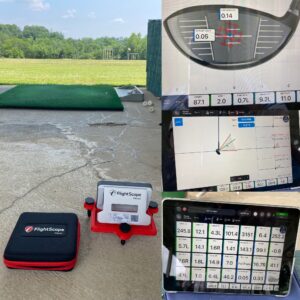As you improve, you embrace the truth that golf is a game that requires making adjustments. But the key is learning to make helpful adjustments at the right time that lead to the desired outcome for your golf shots.
Too many times, golfers make unhelpful adjustments. Usually this is a result of not understanding what we are doing. We risk becoming more confused and frustrated than we were before. Experimentation is important, but it can be a slippery slope. Even the world’s best players on the PGA Tour have (over)-tinkered with their swing to their detriment merely because the “numbers” and video technology lured them into unnecessary changes in their quest for something “more” (whether it be more distance or perfect angles and lines, etc.) at the sacrifice of accuracy, consistency, feel, and what works for them.
On the other hand, sometimes we make adjustments without even meaning to. Old habits and tendencies may come into play without us even realizing that it’s happening. Interestingly, our subconscious plays a big role in this dynamic — our athletic ability, intuition, and perception of what we are doing or should be doing can take over mid-swing and even pre-swing to make an adjustment we subconsciously think is necessary in order to make solid contact with the ball. Because we don’t consciously realize it we risk becoming more confused.
So, if you want to improve your game by making the right adjustments, then you need to understand what you are doing well, what you aren’t doing well, and most importantly, what is truly the root cause of your misses, so that you can address them properly in a way that will work best for you. The best instructors in the world understand this well. Others don’t. Novice golfers often don’t understand this either.
This then begs the critical question, “What is best for you?”
What’s best for you will depend on many factors and should take into account things such as the place from where you started (i.e., the journey and process), what tendencies you have, your body type and dimensions, your flexibility in different parts of your body, what feels good to you, what ball flight you like, and a host of other factors not mentioned. Notice how many of these factors may and often do, change over time. Therefore, you must expect that your golf swing could/should also change. Don’t be surprised if it does. Adjustments.
Since golf is a game of adjustments, we need to realize that we may first need to get to point A and then point B before reaching point C. Trying to go straight to point C may not be possible or may be like putting a “band-aid” on your problem since the skills for A and B have not been adequately acquired problems A and B have not been adequately addressed.
Lastly, in my opinion, be wary of instructors that steer you to averages just for the sake of averages or who lead you to what is “perfect” for the sake of attaining the “ideal” swing — whether it be line, angle, position or something else — without offering you a clear rationale that is meaningful. “Ideal” according to whom, you should ask. Even more importantly, ideal for whom? Every good instructor should be able to defend their position, approach, and swing philosophy and explain why they believe something is best for you. If the answer is “Because that’s the Tour average” or “you should model the ideal swing,” then I’d say, be polite and find a new instructor.



